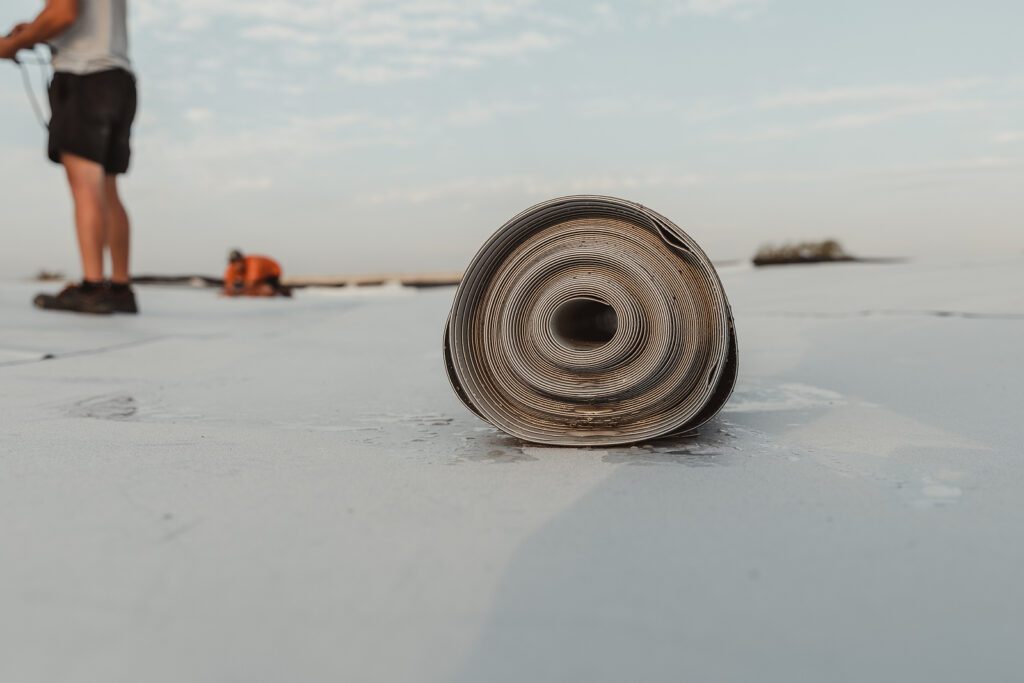EPDM stands for ethylene propylene diene monomer and is a type of synthetic rubber. It is made using three different monomers in the production process, ethylene, propylene and diene. The combination of these materials provides EPDM with a number of valuable properties.
The most useful property of EPDM rubber is its excellent resistance to weathering and UV radiation, meaning it can be used outdoors without degradation. It is also resistant to acids and alkalis, ozone, and steam as well as having good thermal stability.
EPDM rubber has a wide variety of uses including flat roofing, pond liners and seals in car engines. Its temperature stability and weathering resistance is the main reasons why EPDM rubber is so suitable for outdoor roofing applications as it can withstand extreme temperatures and stay flexible in cold weather.
The durability of EPDM rubber makes it an excellent choice for rubber flat roofing as it can last up to 50 years, meaning it can provide a long-term roofing solution.
At Amber Flat Roofing, we use EPDM rubber for our flat roofs and believe that the combination of its excellent properties, long lifespan, and affordability make it the perfect material for your flat roof needs.
What is EPDM Roofing?
EPDM roofing refers to a range of roofing systems that use a single-layer rubber membrane along with other components like vapour barriers, thermal insulation, and accessories such as drainage, pipes and gravel guards. For green roofs, vegetation is also included.
EPDM is a versatile material that can be utilised in various applications. However, it has become particularly popular in the flat and low-pitched roofing industry because of its durability, ability to withstand harsh weather conditions and capacity for uniform installation throughout the entire roof surface.
EPDM is an elastomer that stands out for its exceptional weather-resistance capabilities. It is tear-resistant with high tensile strength, like many other elastomers, but what sets it apart is its ability to withstand extreme temperatures, ozone, and UV rays. Therefore, it is an ideal choice for roofing.
EPDM Wins a Nobel Prize
The EPDM production process was discovered by Karl Ziegler, a scientist from Germany who was experimenting with polymerisation. He made a critical observation that the presence of nickel in the autoclave used for the reactions could halt the process. Ziegler and his students found that they could speed up the reaction and create a strong, flexible polymer with high heat and cold tolerance by using a catalyst made of titanium and aluminium and carrying out the reaction at normal pressure.
Ethylene was previously thought to be hard to polymerize due to the requirement of high pressures and temperatures. However, Ziegler’s discovery made the production of polyethene easier and resulted in a more rigid and heat-resistant plastic compared to its high-pressure counterpart. Within three years of the discovery, 200 metric tons of the new plastic had been manufactured.
Ziegler shared his catalyst with the Montecatini Company, where an Italian scientist named Giulio Natta was working as a consultant. Natta developed Ziegler’s work further, resulting in the creation of the Ziegler-Natta catalyst. In 1963, Karl Ziegler and Giulio Natta were honoured with the Nobel Prize in Chemistry for their contributions in the field of controlled polymerisation, which significantly advanced the production and utilisation of plastics.
Contact us today to discuss how we can help you with your rubber flat roof.


